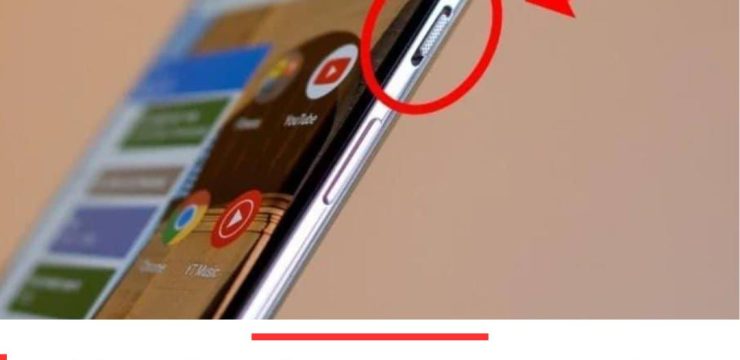Have you noticed a small orange dot at the top corner of your iPhone screen and wondered what it means? You’re not alone. Many iPhone users have raised concerns about this indicator, worried that it might signal a privacy issue or even eavesdropping. So, what exactly does this orange dot represent, and is there any reason to be concerned? Let’s break it down and explore how you can take control of your iPhone’s privacy settings.

Debunking the Orange Dot Myths
There have been rumors swirling around the orange dot, with some people speculating that it means someone is secretly listening to your conversations. This theory, while concerning, is actually far from the truth. The orange dot was not introduced to spy on users but rather to protect them.
In 2020, with the release of iOS 14, Apple implemented both orange and green dots as part of its privacy measures. The orange dot appears when an app is using your iPhone’s microphone, while the green dot shows up when your camera, or both the camera and microphone, are in use. This feature helps increase transparency so that users are always aware when an app accesses sensitive parts of their device.
When to Worry (And When Not To)
It’s natural to feel a little uneasy when you see the orange dot for the first time, but the good news is that most of the time, it’s not something to worry about. In many cases, the orange dot simply means that an app you’re actively using requires microphone access. This could be an app for voice recording, video chatting, or even a game that uses the microphone for sound input.
However, if the orange dot appears unexpectedly when you’re not using any app that should be accessing your microphone, it’s a good idea to investigate further. You’ll want to check which app is responsible and adjust your privacy settings if needed.
Managing the Orange Dot on Your iPhone
If you’re concerned about the orange dot or want to tighten your privacy settings, there are a few steps you can take to control which apps have access to your microphone.
Step 1: Find Out Which App Is Using Your Microphone
When you see the orange dot, the first thing you should do is identify the app that’s using your microphone. Here’s how:
- Swipe down from the top-right corner of your iPhone screen to open the Control Center.
- At the top of the Control Center, you’ll see a notification indicating which app is currently using or has recently used your microphone.
This quick check allows you to confirm whether the microphone usage is coming from an app you trust.
Step 2: Adjust Microphone Access in Settings
If you find an app that you don’t want accessing your microphone, you can easily revoke its permissions:
- Open the Settings app.
- Scroll down and tap Privacy & Security.
- Select Microphone, and you’ll see a list of apps that have requested microphone access. You can toggle off access for any app you don’t want to have that capability.
By doing this, you can ensure that only apps you trust can use your microphone.
Step 3: Change the Orange Dot’s Appearance
For some users, the orange dot might be confusing or distracting. If you prefer a different visual cue, iOS allows you to change the appearance of the dot:
- Go to Settings.
- Tap Accessibility.
- Select Display & Text Size.
- Toggle on the Differentiate Without Color option, which will change the orange dot to a square shape.
This is particularly helpful for people who have trouble distinguishing between colors or for those who simply prefer a different indicator.
Extra Privacy Tips for Your iPhone
The orange dot is just one of many privacy tools that Apple offers to help you stay in control of your data. Here are a few additional steps you can take to protect your privacy:
1. Managing Camera Access
Just like with the microphone, you can control which apps have access to your iPhone’s camera. If you see the green dot and want to investigate:
- Open Settings > Privacy & Security > Camera.
- Review the list of apps with camera access, and disable permissions for any apps you don’t feel comfortable with.
2. Controlling Location Sharing
Apps often request access to your location, but you can decide how and when your location is shared:
- Go to Settings > Privacy & Security > Location Services.
- You can allow apps to access your location always, only while using the app, or never, depending on your preferences.
3. App Tracking Transparency
With the introduction of App Tracking Transparency (ATT) in iOS 14.5, Apple now requires apps to ask for your permission before tracking your activity across other apps and websites. To manage these settings:
- Go to Settings > Privacy & Security > Tracking.
- Enable or disable tracking permissions as you see fit.
Conclusion: Taking Control of Your Privacy
The orange dot on your iPhone is a helpful feature that lets you know when an app is using your microphone. It’s not a cause for alarm but rather a tool that gives you more insight into your device’s functions. By managing your app permissions and taking advantage of the privacy features built into iOS, you can stay in control of your personal data and enjoy peace of mind while using your iPhone.
With Apple’s privacy measures, you can rest easy knowing that your information is secure and that you have the power to control which apps access your microphone, camera, and other sensitive data.





